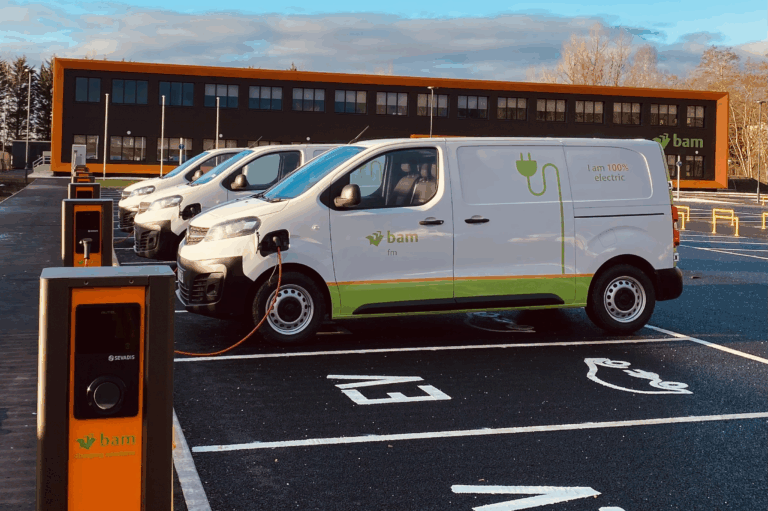Updated GHG Standards Set to Reshape Net-Zero Claims: What FM Needs to Know

A new wave of global climate disclosure reforms is poised to reshape how organisations measure and communicate their greenhouse gas (GHG) emissions. Updates from the International Sustainability Standards Board (ISSB), the Science Based Targets initiative (SBTi), and the GHG Protocol are driving a shift towards greater rigour, transparency, and real-world impact, particularly in Scope 2 and Scope 3 reporting.
Tightening the Rules on Scope 2 Emissions
A major focus of the forthcoming updates is on Scope 2 emissions (indirect emissions from purchased electricity). Historically, many organisations have used market-based methods to claim zero-emissions electricity based on purchasing certificates or power from clean sources not directly connected to their own grid or time of consumption.
Under the anticipated revisions from the GHG Protocol, such claims will need to meet much stricter criteria. Companies will only be able to report zero-carbon electricity where generation and consumption are time- and location-matched, that is, within the same grid system and timeframe, unless storage solutions are in place. There will also be a stronger focus on transparency around contractual instruments, requiring disclosure of the actual impact of green power deals on grid decarbonisation.
This change poses a clear challenge for FM providers who have leaned on certificates or offsite renewable contracts to demonstrate climate leadership. Instead, FM teams will need to rethink energy procurement strategies to prioritise locational and temporal alignment and prove that their actions measurably contribute to decarbonisation.
Scope 3 Scrutiny and Materiality
The reforms are also set to strengthen expectations around Scope 3 emissions (the indirect emissions occurring across an organisation’s value chain). FM teams , whether providing outsourced, out-tasked operations or in-house teams, procurement, travel, and waste, will be under pressure to deliver clearer, material emissions data that clients can integrate into their own disclosures. In particular, outsourced providers will need to be reporting emissions for customers as Sold Services.
Scope 3 targets will need to be set based on material issues and impacts, aligning more closely with business strategies. There is also a shift away from generic offsetting towards Beyond Value Chain Mitigation (BVCM). These actions support broader climate goals but are transparently distinct from emissions reductions within the company’s own footprint.
These changes will require FM providers to move beyond broad sustainability commitments and towards targeted, evidenced emissions reductions, with robust data systems in place.
Separate Targets and Transition Plans
The SBTi’s Net-Zero Corporate Standard (Version 2) is expected to require separate targets for Scope 1 and Scope 2 emissions, formalising what is already in place for UK government departments under the Greening Government Commitments (GGCs). This will help to address the current limitations of combined targets and provide clearer accountability across emissions categories.
Additionally, companies will be expected to develop credible transition plans that explain how they will achieve their emissions targets. These plans must provide tangible roadmaps, not just goals, with clear steps, timeframes, and responsibilities. For FM providers, this means embedding sustainability into core service delivery, procurement, and workforce development, rather than treating it as an external add-on.
Overhaul of Measurement Methods
The reforms also aim to overhaul the relationship between market-based and location-based reporting, addressing the disconnect between reported emissions and real-world climate impact. Tools such as contractual instruments (e.g. renewable energy certificates or power purchase agreements) will be scrutinised more closely, ensuring they are tied to actual grid decarbonisation outcomes.
Together, these changes will drive more accurate, consistent, and comparable emissions reporting, something that the ISSB’s IFRS S2 climate disclosure standard is already pushing through its global harmonisation efforts.
What This Means for FM
This evolving landscape demands a proactive response from the FM sector. To stay ahead of regulation and meet client expectations, FM must:
- Revisit Scope 2 claims to ensure energy procurement aligns with time and location matching requirements.
- Invest in systems for Scope 3 data collection and materiality assessment, particularly in outsourced services and procurement.
- Prepare for separate reporting of Scope 1 and 2, with supporting transition plans that lay out credible emissions reduction pathways.
- Shift from offsetting to Beyond Value Chain Mitigation, aligning with best practice while maintaining transparency.
- Build capacity and skills across teams to meet the technical and reporting demands of new standards.
Ultimately, these updates mark a turning point. The FM sector is no longer just supporting buildings, it is becoming integral to achieving real, verifiable climate outcomes. Those who adapt quickly and embrace transparency will be better positioned as trusted partners in a decarbonising economy.
Want to learn more about the SFMI?
One of our expert team would be happy to discuss how joining the SFMI could benefit your organisation.



